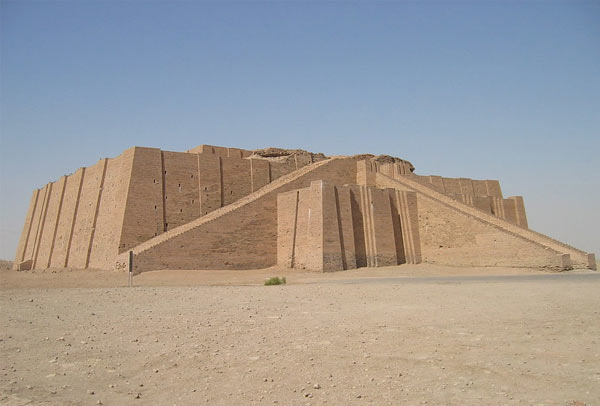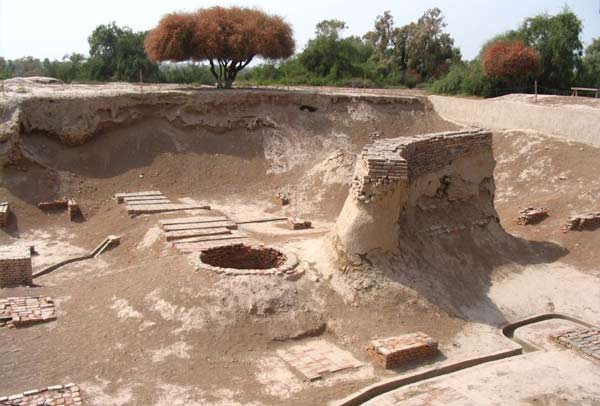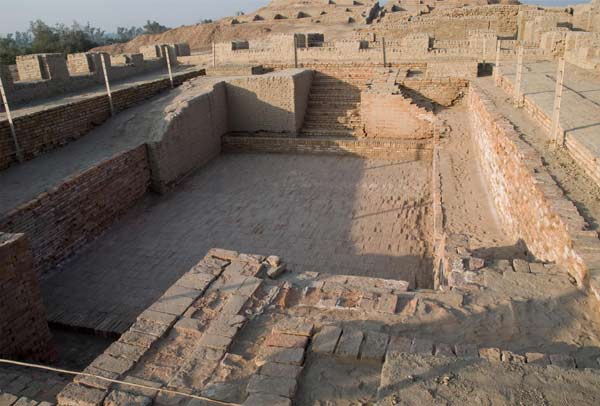Ancient Egypt and Other Bronze Age Civilizations
During The Bronze Age, four large civilizations emerged. All four were dependable on rivers for their sustainability: Ancient China in the Yellow River valley, the Harappa Civilization in the Indus Valley, Mesopotamia near the mouths of the Tigris-Euphrates, and Egypt along the Nile River.
The Bronze Age was a period in history that lasted approximately from 3300 B.C. to 1000 B.C. During this period, the primary metal used for manufacturing weapons and implements was copper, alloyed with arsenic and tin to create bronze. During this time, the first civilizations emerged in Eurasia and Egypt. These civilizations produced bronze or traded other items for this valuable good. Because copper and tin mining areas did not overlap, as shown on the map below, The Bronze Age was the first period in history that supposed structural contacts between different civilizations.
Egypt and Other River Valley Civilizations
How civilization emerged in Egypt is very similar to what happened in Mesopotamia during the 5th and 4th millennia B.C. Neolithic populations from North Africa and the Eastern Mediterranean settled in the Nile Delta and lower reaches of the river. These early farmers raised high yields thanks to fertile Nile silt, and a dense population developed itself.
In these early stages, Egypt was very much influenced by the Sumerian cities. The pyramids demonstrate borrowing architectural elements from Sumerian culture, specifically from their ziggurats. Hieroglyphic writing is thought to reflect an imitation of the Sumerian cuneiform because hieroglyphs appeared as a complete system, compared to the slow evolution of Sumerian inscriptions.
Of course, there were also significant differences: geographically, Egypt had easy access to stone for buildings, while in Sumer, buildings were constructed with lower-quality mud bricks.
The Nile, however, was the most important distinction and assured Egypt of fertile soils and a reliable internal transport system. Thanks to favorable winds and a gentle current, boats could easily navigate the river. These conditions made the Nile far safer than the other rivers, with their life-threatening currents and floods. The Nile's gentle floods even made canals unnecessary. Instead, Egyptians relied on basin irrigation: they trapped floodwater behind dikes so the fertile silt could settle on the land. When it came time to plant, the surplus water was allowed to run off downstream again, which prevented salt build-up. For example, salty fields were a huge problem in Mesopotamia, where water from the fields evaporated every year. This process always leaves a little salt and, when ignored, eventually turns the land into a desert.
The transport system also made it easier for the Pharaoh to centralize his kingdom. Control of the shipping system allowed the concentration of grain and other resources wherever he wished. Taxes were also far more efficient to collect. They made it possible to sustain a large workforce for building the enormous pyramids.
Egypt also had reliable natural frontiers, securing the kingdom from external threats. Formidable deserts like the Sinai made frontier defense much easier, and generally, Egyptians found little worthwhile beyond their borders. This is again a huge difference compared to the constant rivaling Sumerian cities. Yet, this did not prevent encounters with the rest of the world. Egypt's coastal delta is accessible to seafarers, and this allowed the spread of Egyptian ideas, techniques, and arts to the Mediterranean (Minoan Crete). Although swamps and deserts made access to sub-Sahara Africa difficult, Egyptian influence even extended to nowadays Sudan.
The Bronze age Civiliazations
Mesopotamia: Sumer
In contemporary Iraq, 'Mesopotamia' comes from Greek and means 'land between the two rivers.' During the 6th Millennium B.C., inhabitants began making the middle and lower reaches of the Euphrates and Tigris rivers suitable for agriculture. Because rainfall is almost nonexistent in Southern Mesopotamia, only the rivers provide water. This meant that inhabitants had to work together in great numbers to channel and embank the river courses. These irrigation works were also necessary because of periodic life-threatening river floods. Archaeologists are sure that beginning about 3500 B.C., large clusters of mud brick buildings near the mouths of the two rivers (close to the Persian Gulf) appeared. Approximately a dozen of these 'protocities' inhabited several thousand people, were fed by food (mostly grain) from irrigated fields along the riverbanks, used the Sumerian language, and traded by land and sea with neighboring peoples.
The next stage started from about 3000 B.C. Massive walls were made from mud bricks to protect these settlements from external attacks. This feat marked a new level of social organization: the Sumerian city. These cities emerged because, on the one hand, the irrigated fields could support a larger population, but also because the infrastructural works to create these fields in the first place required the combined efforts of large numbers of humans. Some famous examples of these cities are Ur, Uruk, Akkad, and Babylon.
Another essential element was the emergence of a relatively new overland communication web via both river transport and donkey caravans. Before, terrain obstacles, like tropical jungles, meant that shipping along the coast of the Indian Ocean had very limited contact with inland civilizations. However, after the domestication of donkeys in Egypt or Southwest Asia (circa 5000 B.C.). Donkey caravans began to span hundreds of miles. These overland caravans connected the Southwest Asian hinterlands with coastal shipping. They converged at the head of the Persian Gulf, where the Sumerian civilization with its first cities arose around 3000 B.C.

© Maia C - Mud tablet with Cuneiform
At the same time, the Bronze Age started in Mesopotamia. People used copper and polished stone tools to make knives, beads, and other jewelry. However, being a relatively soft metal, copper's use remained limited until the late 4th millennium B.C. when they invented the melting of bronze. Where this invention took place first is not known, but the oldest bronze items in Western Asia came from Southern Mesopotamia. These first urban societies also offered the required concentration of people, making further specialization of labor and trade possible. These more complex social organizations created space for inventions and innovations, like the first known writing system, called 'cuneiform,' which also emerged around 3000 B.C.
The Sumerian cities were socially organized into three different groups. The most distinctive group were large divine- or temple households. Each city had one or several gods in residence. However, every god remained local and had to take account of deities from other cities. Therefore these different gods were not almighty. Sumerian priests believed in a council of seven great gods: sun, moon, earth, sky, fresh water, salt water, and storm. This godly council presided over the cosmos and met each New Year's Day to decide what the year would bring. To please these gods, the priests pastured sheep on grasslands and managed large irrigated grainfields cultivated by several hundred workers. They then used vast quantities of wool, grain, and other agricultural goods to create a luxurious lifestyle for the resident gods and themselves. An example of their importance are the colossal temple-,pyramid-like structures called 'Ziggurat.' A building that shows what the Sumerians were capable of.

© Joshuea Mcfall - The Temple Ziggurat at Ur
A group of privileged citizens headed a substantial household consisting of relatives, a staff of dependent field workers, and some enslaved people farmed the irrigated land. Lastly, a harbor community outside the walls accommodated merchants, caravan personnel, and sailors who brought necessary goods to the city. They imported Timber and metals to create bronze and other precious materials. At the same time, they exported woolen textiles, dates, wine, and other goods. Other products were copper and bronze weapons and tools, and wheel-spun pottery.
As the cities grew, rivalry and conflict between them also increased. Sumerian citizens elected captains to organize new building projects or military expeditions. However, as warfare became more common, temporary captains became lifelong rulers and kings. These men built up warrior households that eventually rivaled and dominated the temple households around 2300 B.C.
Because of technological innovations, architectural accomplishments, and writing, Sumerian influence spread far. Via trading and raiding, the Sumerians made contact with each other and other remote Indo-European-speaking pastoralists who lived on steppes to the north. The Sumerian accomplishments spread so far that these distant peoples incorporated elements of the Sumerian pantheon into their religion. Therefore, the Sumerian seven great gods influenced Aryan, Greek, Roman, Celtic, and Germanic deities of later times.
To conclude this chapter, with the rise of Sumer, the combination of city-based trade and raid spread urban tastes, goods, religion, and complex social structures across a widening area of Southwest Asia, North Africa, and Southeast Europe. Mesopotamian civilization had a significant impact on world history.
Indus: Harrapa
The Indus Valley Civilisation or Harappan Civilisation emerged in the course of the 3rd millennium B.C. (circa 3300 B.C.) and was also a city-oriented civilization of a pre-Indo-European speaking people. However, this civilization spread across the largest territory and had the largest concentration of people in its cities. There isn't much known about this mysterious civilization. The reason is that scientists still need to decode their language and writing system, which means we have to focus mainly on archaeological findings and theories.
This civilization centered around the Indus River and its tributaries. These rivers also flooded but were less dangerous than the Tigris and Euphrates floods, making two harvests a year possible. One of the most important rivers was the 'Sarasvati' river. A river we know from Sanskrit texts around 800 B.C. At first, they thought the Sarasvati was a legendary river. But thanks to archaeologists' work, we now know the Sarasvati existed but dried up.

© Chaudhry Khawar - Harappa Indus Civilization
Like in Mesopotamia, brick, and loam were used for construction. The ancient Indus cities were larger than those of Mesopotamia. The largest cities, called Mohenjo Daro and Harappa, located in modern-day Pakistan, are estimated to have a population of several ten thousand people. The ground plan suggests less social inequality compared to Mesopotamian cities, but again this is easier to prove with text documents.
What they discovered for sure, however, is their high art of water management. The Indus cities segregated drinking water from wastewater for the first time using a sewage system and even had large public baths. Such an accomplishment helped reduce the risk of urban diseases. It was only when the Romans constructed similar buildings over two thousand years later that these structures resurfaced once again.

© Benny Lin - The great bath at Mohenjo Daro
How the government or religion that organized such works functioned remains a mystery. It is quite certain that the cities of the Indus Valley had been pre-planned: the sites were carefully chosen and constructed with great care for full habitation. They also show a great level of conformity with each other. These elements suggest a strong central government and efficient bureaucracy that can plan, fund and organize impressive architectural feats.

© Benny Lin - Mohenjo Daro
Traders must have made trade contacts with Mesopotamia via the seacoast of Iran and the Persian Gulf. They found proof of this by discovering Sumerian seals and other artifacts in the two greatest cities. This culture also received influences from further east, from which rice cultivation would be derived.
In its turn, the Indus civilization must have left a legacy to other and later Indian cultures, especially in the religious field, as images carved on a few Indus seals suggest that some of the gods of Hinduism originated as Indus deities. Archeology also shows that the influence of Indus culture spread widely along the coasts of the Arabian Sea and to some inland sites. But as long as they haven't deciphered the script, much remains to be discovered.
This culture declined in the 2nd millennium B.C., and its remains were finally destroyed around 1500 B.C. Why precisely the civilization fell is unknown. One theory suggests an invasion of light-skinned peoples from the north, called Aryans. This theory, however, has been discredited: scholars now believe these so-called Aryans migrated peacefully and assimilated with the local population. Instead, other theories propose reasons like climate change, the drying up of the Sarasvati River, overpopulation of the cities, or a decline in trade with Mesopotamia and Egypt. Because history is seldom monocausal, a combination of such reasons is likely.
China: The Yellow River and The Shang-Dynasty
The Yellow River, or Huanghe, was the center of a highly developed Chinese bronze culture that arose around 1500 B.C. This early Chinese civilization was unique in many ways. Geographically the Chinese were separated from the other bronze age civilizations, already discussed in this article, by the Gobi desert in the north and the Himalayas in the west.
Village settlement, barley, oats, millet, and wheat cultivation preceded the early Chinese state. Large, walled villages appeared around 3000 B.C. next to growing different crops and fine wheel-spun pottery decorated with early marks. In this period, power shifted from coalitions of local clan leaders until the Xia, especially the Shang dynasty, introduced a strong basis for political and military power. Compound bows, bronze armor, horses, and chariots were used based on a new military system. Steppe peoples from Central Asia probably introduced the use of chariots. The origin of bronze melting is unknown, but it is believed to be an autonomous development rather than an import from elsewhere.
The Shang dynasty is traditionally dated from 1523 to 1028 B.C. During this period, the Shang rulers expanded their territory and culture from the Yellow River mostly to the south. Either peacefully via the clearing of forests or violently via conquest. In these southern areas, the Chinese cultivated rice, which led to a large population surplus.
Civilizations emerged, giving rise to a more complex society that was divided into an elite of wealthy landowners and charioteers centered around the king in his resident city. At the same time, the mass of the peasantry worked the land in a primitive way, even without plows. Another important job for these peasants was to keep the Huanghe in check, which constantly changed course due to large heaps of sediment (also why the river got its yellowish color and name). The king needed a massive commitment of an obedient population to prevent disasters through the constant embankment, even more than in the other river valley civilizations.
Other elements of Chinese culture were already present during the Shang Dynasty: for example, ancestor worship and the authority of wise-deemed elders. They also worshipped Gods and natural forces. The predecessor of the Chinese script was mainly in use for religious purposes and even originated from the use of Oracle Bones or so-called Dragon's Bones. These were shoulder blades of oxen or the flat underside of turtle shells which they carved symbols into. This picture script later developed into character writing. It is so close to China's historical script that scholars could almost read it immediately.
The power of the Shang rulers faltered towards the end of the 2nd millennium B.C., approximately at the same time other bronze age civilizations were in decline. The reason for the end of the Shang dynasty was similar to that of other early states. It was probably the result of a certain independence of great landowners and high military officers around the king. The overthrow of the last king by a Western duke was legitimized by a representation that endured the whole of Chinese imperial history, namely the 'mandate of heaven' political philosophy. Depicted as a degenerate monster, the deposition of the king was in accordance with the will of heaven. It said that the mandate of heaven passed to a new dynasty, the Zhou.
To conclude
Egypt may have been the smallest of the four early civilizations discussed here, but because of its smaller territory and the Nile, Egypt was a strongly centralized kingdom. The population was also relatively widespread. Thus its urbanization grade was the least compared to other Asian civilizations. The same can be said for the amount of irrigation work, but this meant less land degradation. Thanks to these elements, the Egyptian state could survive for the longest period!
Bibliography
- The human we: a bird's-eye view of world history
- De Oudheid: Grieken en Romeinen in de context van de wereldgeschiedenis.(Dutch Book)
